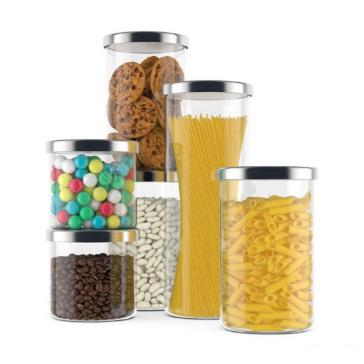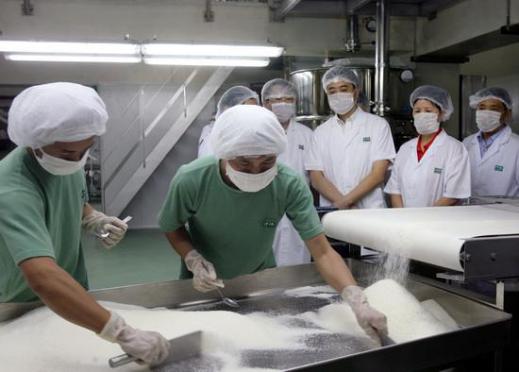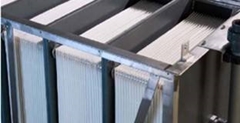Food&Beverage
The waste water of food industry varies greatly according to the industry, among which the pollutants are mainly organic substances, such as high food fiber, starch or protein. The morphology in water includes particulate matter, colloidal substance and dissolved substance. The pH value of most wastewater is close to neutral, and the concentration of pollutants in wastewater varies greatly. Food industrial wastewater is characterized by high BOD and easy biodegradation. It is mainly treated with mature biochemical treatment technology and professional equipment.

An example: corn starch
The sources and corresponding characteristics of waste water in corn starch production
Starch wastewater mainly comes from washing, filtration and concentration process of corn starch processing. It contains a large number of dissolved organic pollutants, such as proteins, sugars, carbohydrates, fats, amino acids, etc., followed by inorganic compounds containing N and P. It also contains a certain amount of volatile acid, ash and so on. Starch wastewater mainly consists of wastewater from raw material washing water, air pressure condensation water and drying process.
1.Washing water
The water quantity is large, the proportion of corn and washing water is 1:2.5 ~ 3, and the temperature is 35 ~ 50 degrees. There are many suspended solids in the water, which are mainly corn husk, corn, and so on. COD is relatively low (about 400 ~ 800mg/L).
2.Fetin water or vaporized condensate
Fetin water is characterized by small water volume and relatively high CODCr (about 50000 ~ 800mg /L). The concentration of sulfite is very high (about 2000 ~ 3000mg/L).
3.Protein water
The amount of water is large, and the quantity of protein water produced by one ton of starch is about 5-10m3 or more. The concentration of COD is relatively high, which is about 4000 ~ 8000mg/L. There are large differences due to different water consumption.
At present, there are many kinds of dewatering equipment for SS of starch wastewater in China, which mainly includes drying machine, centrifuge, belt press and vacuum machine. However, some unavoidable problems often occur in the actual dehydration process, such as high energy consumption, loud noise in the operation, easy blocking when starch content is high, easy corrosion by acidic organic wastewater, inadaptation to high temperature waste water and so on.
The sources and corresponding characteristics of waste water in corn starch production
Starch wastewater mainly comes from washing, filtration and concentration process of corn starch processing. It contains a large number of dissolved organic pollutants, such as proteins, sugars, carbohydrates, fats, amino acids, etc., followed by inorganic compounds containing N and P. It also contains a certain amount of volatile acid, ash and so on. Starch wastewater mainly consists of wastewater from raw material washing water, air pressure condensation water and drying process.
1.Washing water
The water quantity is large, the proportion of corn and washing water is 1:2.5 ~ 3, and the temperature is 35 ~ 50 degrees. There are many suspended solids in the water, which are mainly corn husk, corn, and so on. COD is relatively low (about 400 ~ 800mg/L).
2.Fetin water or vaporized condensate
Fetin water is characterized by small water volume and relatively high CODCr (about 50000 ~ 800mg /L). The concentration of sulfite is very high (about 2000 ~ 3000mg/L).
3.Protein water
The amount of water is large, and the quantity of protein water produced by one ton of starch is about 5-10m3 or more. The concentration of COD is relatively high, which is about 4000 ~ 8000mg/L. There are large differences due to different water consumption.
At present, there are many kinds of dewatering equipment for SS of starch wastewater in China, which mainly includes drying machine, centrifuge, belt press and vacuum machine. However, some unavoidable problems often occur in the actual dehydration process, such as high energy consumption, loud noise in the operation, easy blocking when starch content is high, easy corrosion by acidic organic wastewater, inadaptation to high temperature waste water and so on.

As a leading brand in the dewatering machine industry, our multi plate screw press has been widely used in multiple industries, and the dehydration effect has been fully recognized by the owners. We have also made remarkable achievements in some industry dedicated machines for sludge dewatering. Based on our previous experience in the research and development of the dewatering machine, and in accordance with the characteristics of starch production wastewater, we have developed the dewatering machine for the starch protein industry. With its unique working principle and the screw shaft made of special materials, the machine is fully been developed for the starch protein industry. After several field experiments, it is proved that it can avoid the problems in the operation of other starch dewatering machine and achieve the expected treatment effect.
Special multi plate screw press for starch protein industry has the following characteristics.
1.It adopts the special shaft of dregs and the driving system of dregs dewatering.
2.Equipment structure and material can adapt to 50 ~ 70 ℃ high temperature.
3.The design of sludge scraper ensures that the discharge of sludge is not blocked and is smoother.
Applicable occasions: wheat, corn, cassava, soybean, peanut, rice protein, xylose dregs, Chinese medicine dregs, wine lees, vinegar lees, the slagging of fruit drink.
1.It adopts the special shaft of dregs and the driving system of dregs dewatering.
2.Equipment structure and material can adapt to 50 ~ 70 ℃ high temperature.
3.The design of sludge scraper ensures that the discharge of sludge is not blocked and is smoother.
Applicable occasions: wheat, corn, cassava, soybean, peanut, rice protein, xylose dregs, Chinese medicine dregs, wine lees, vinegar lees, the slagging of fruit drink.























































